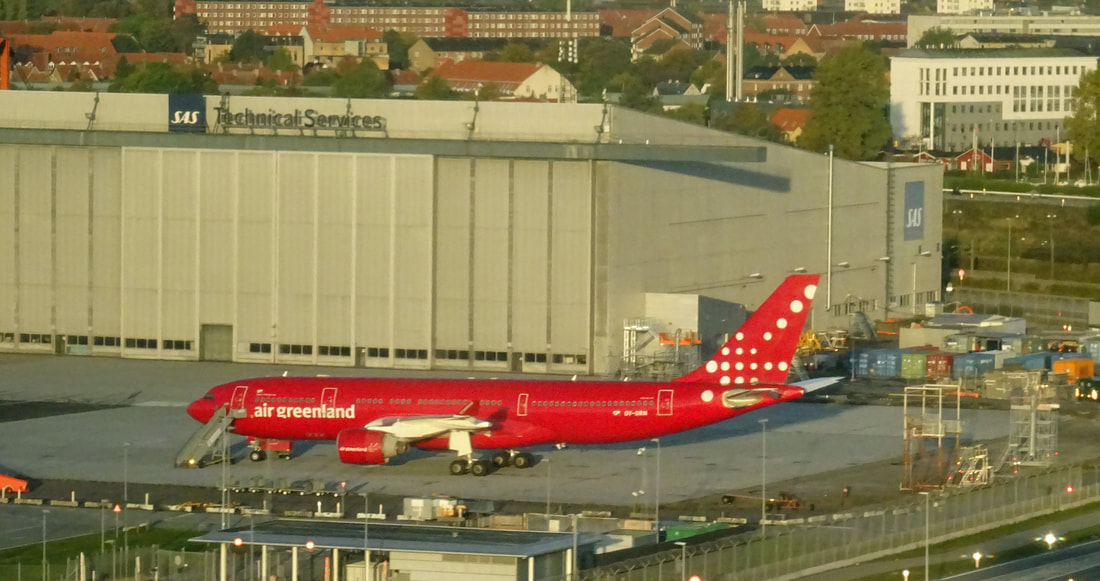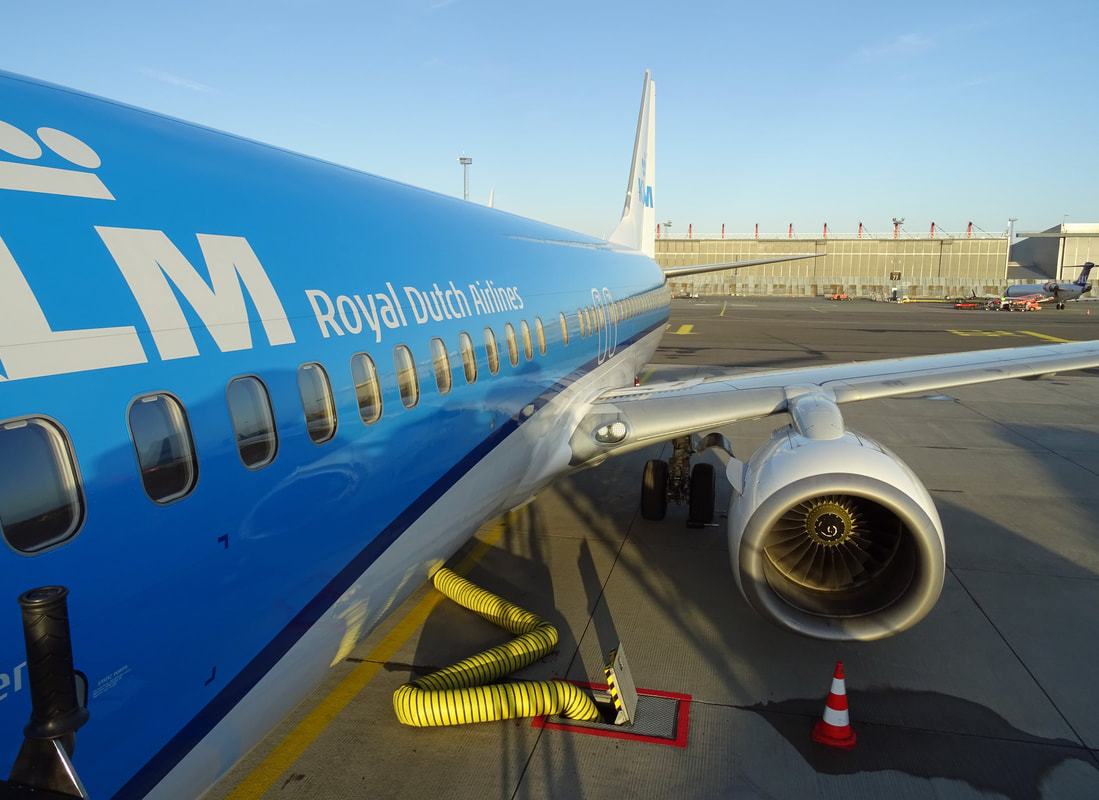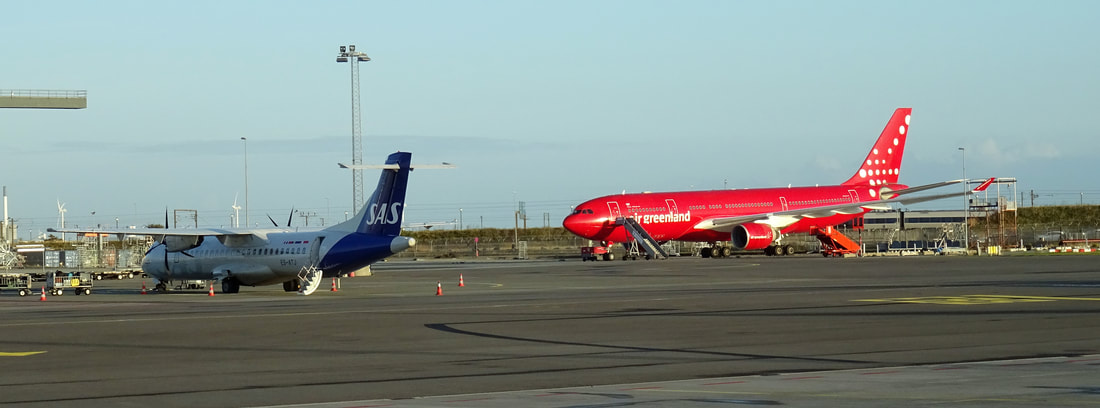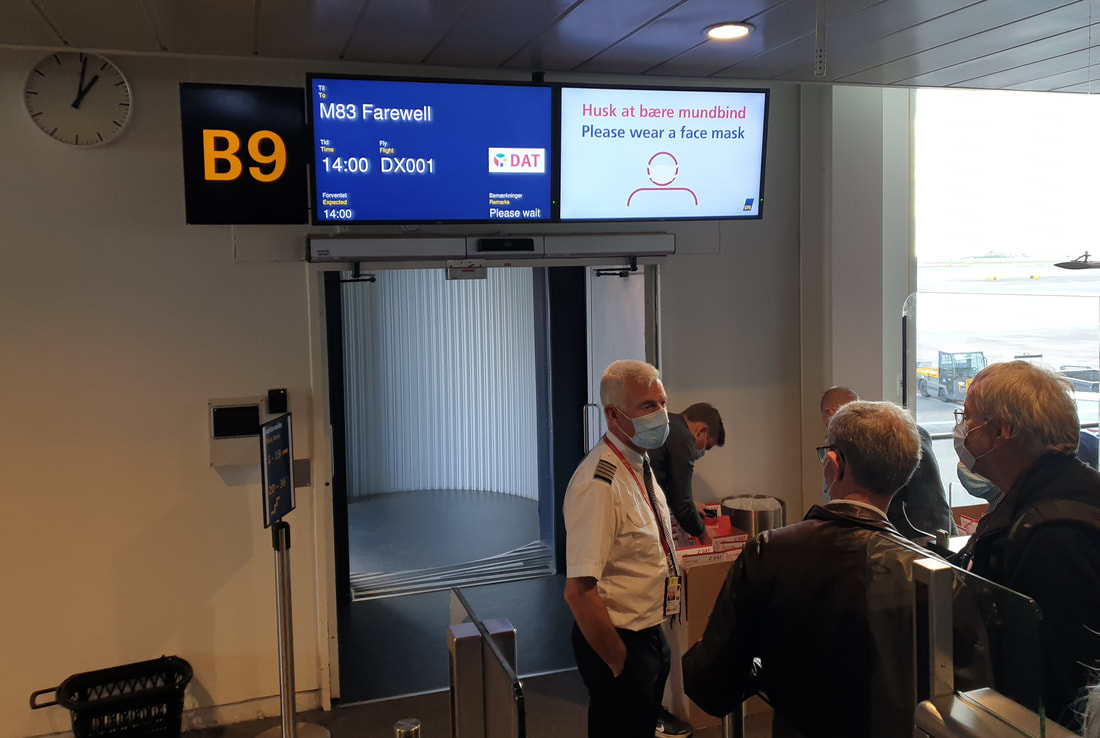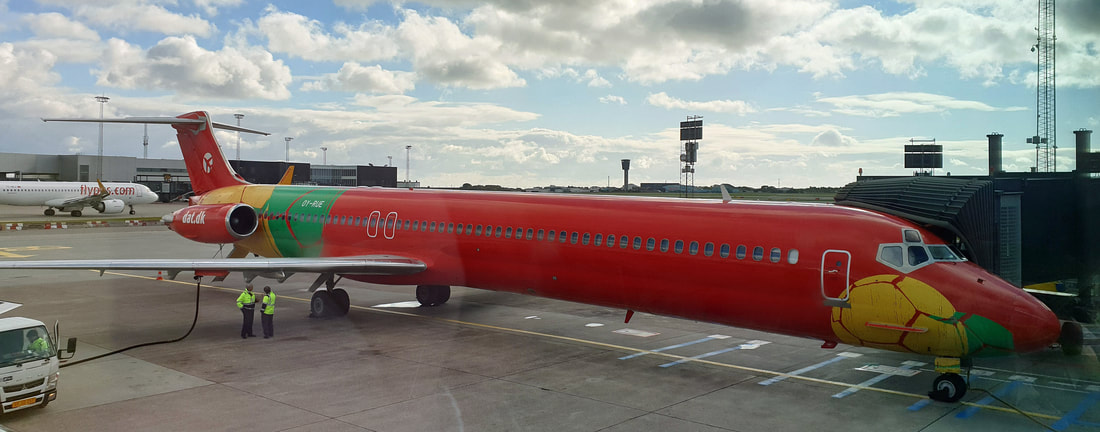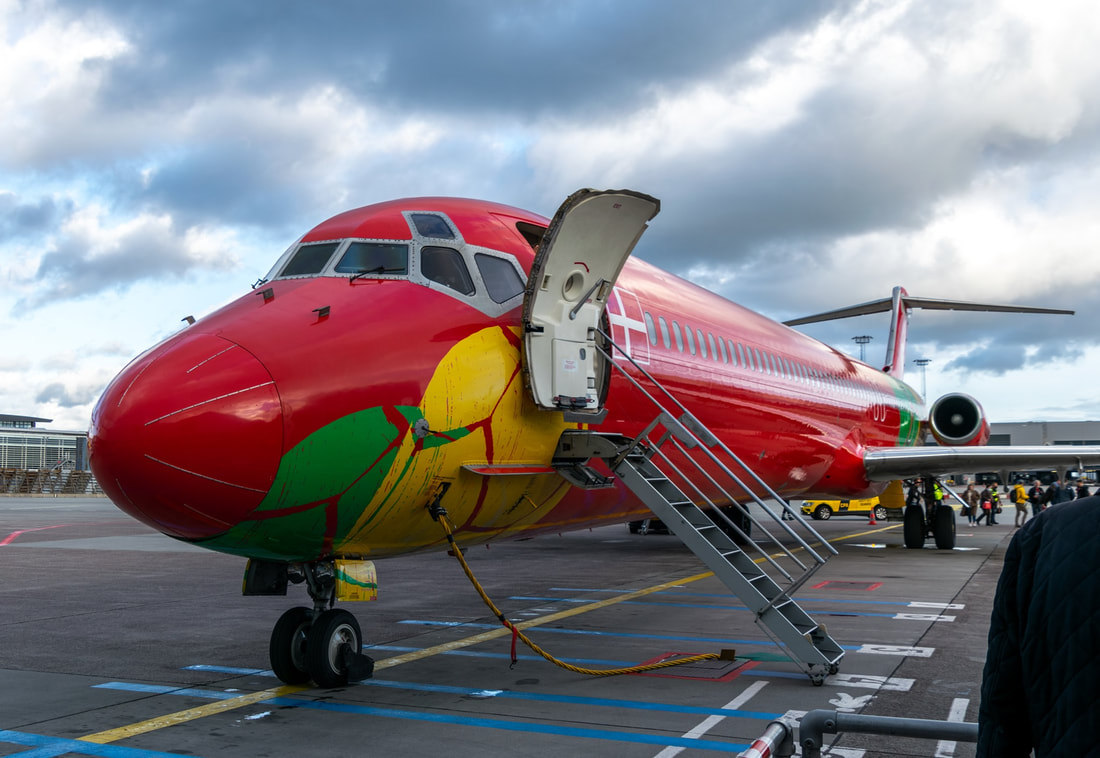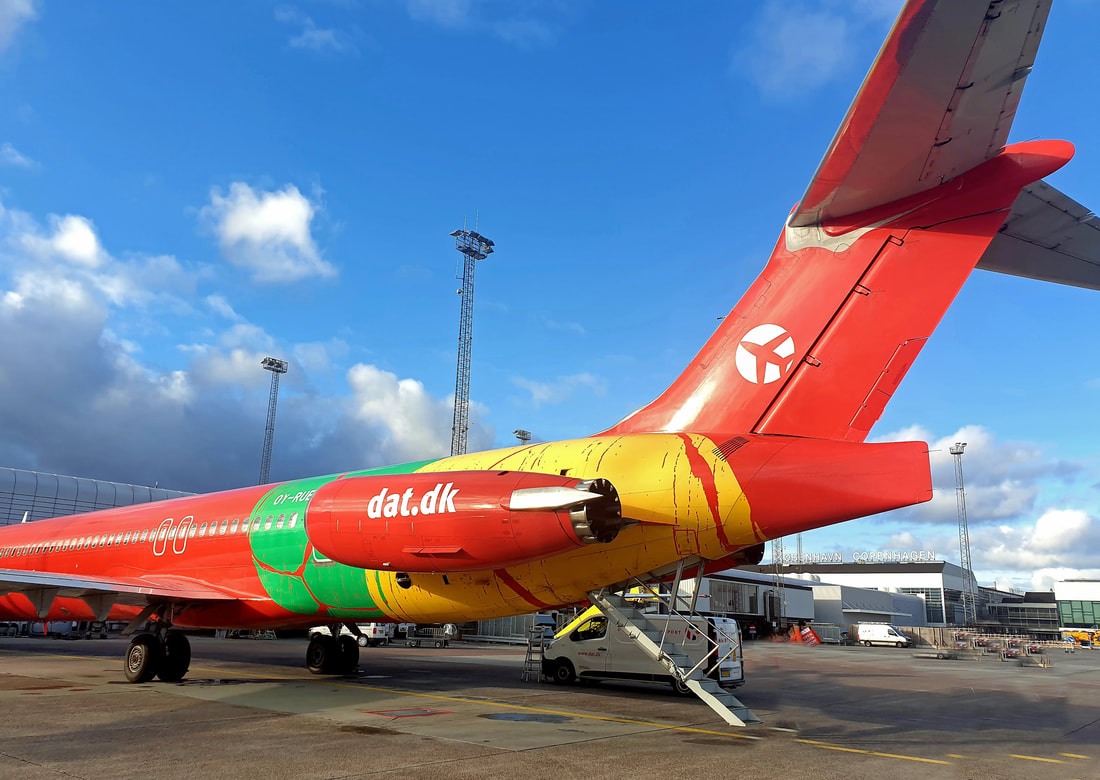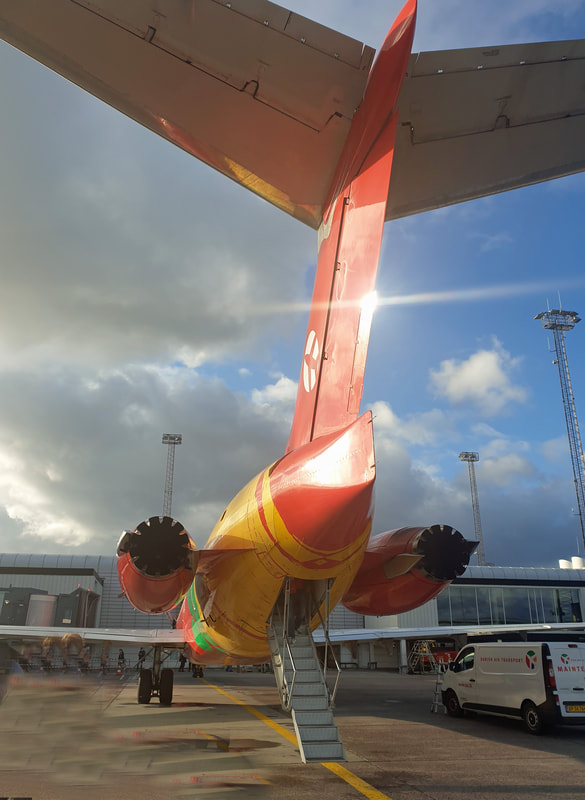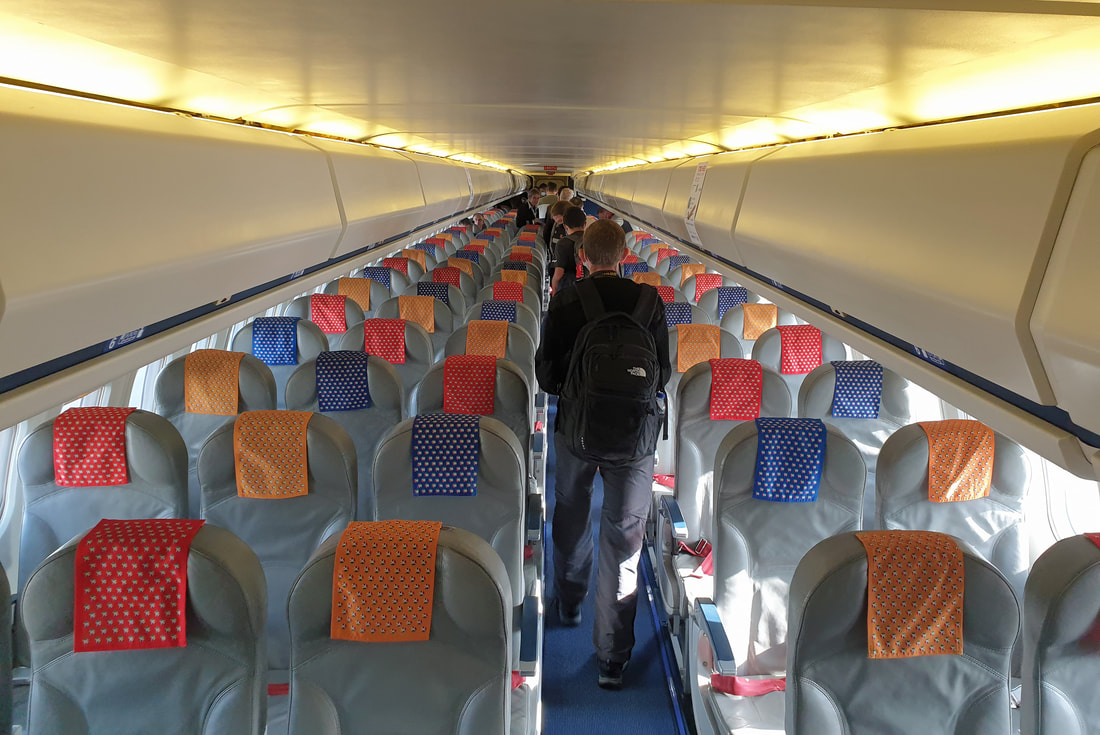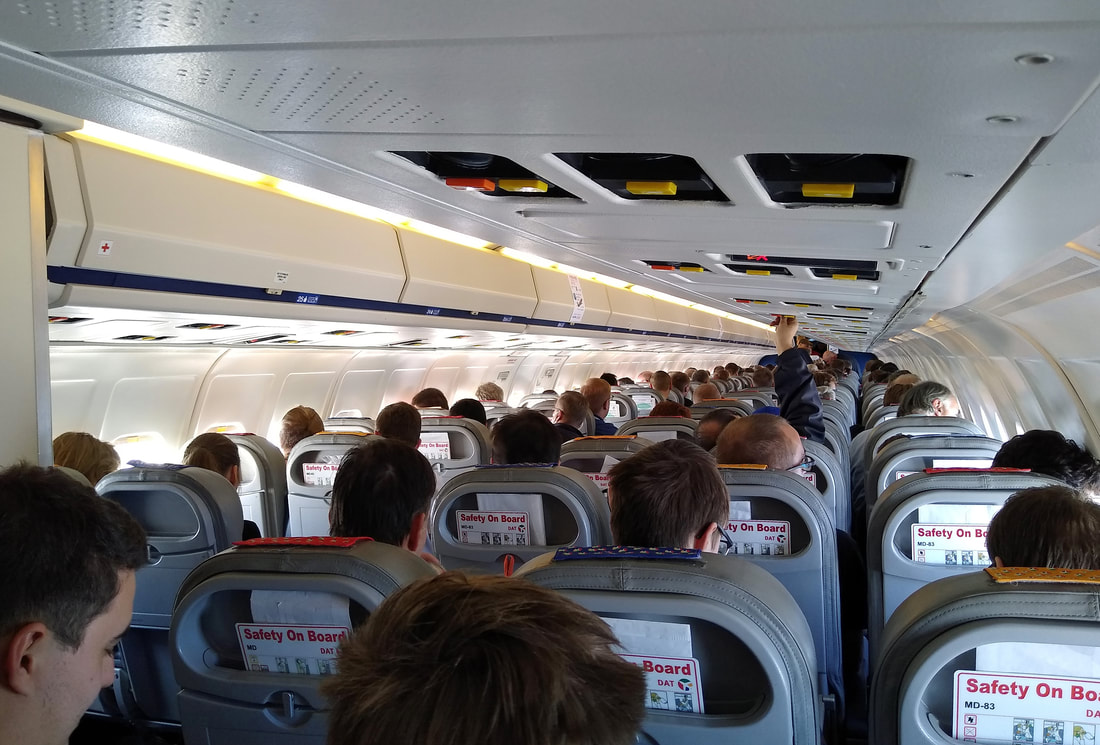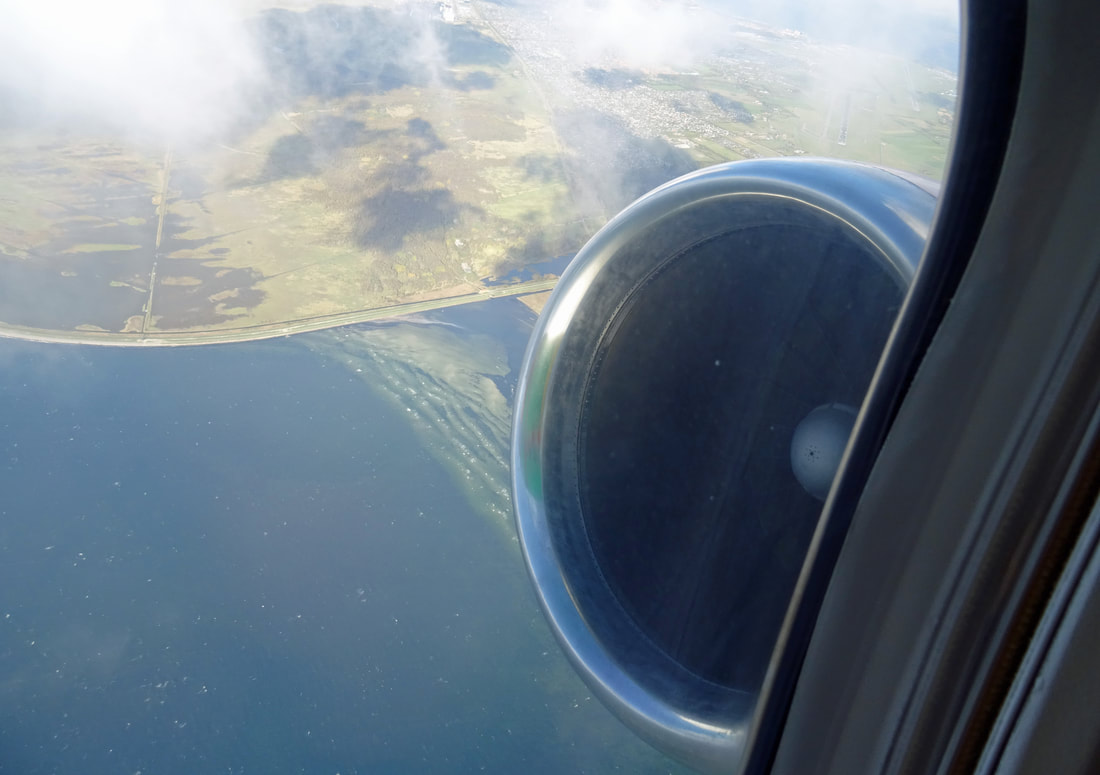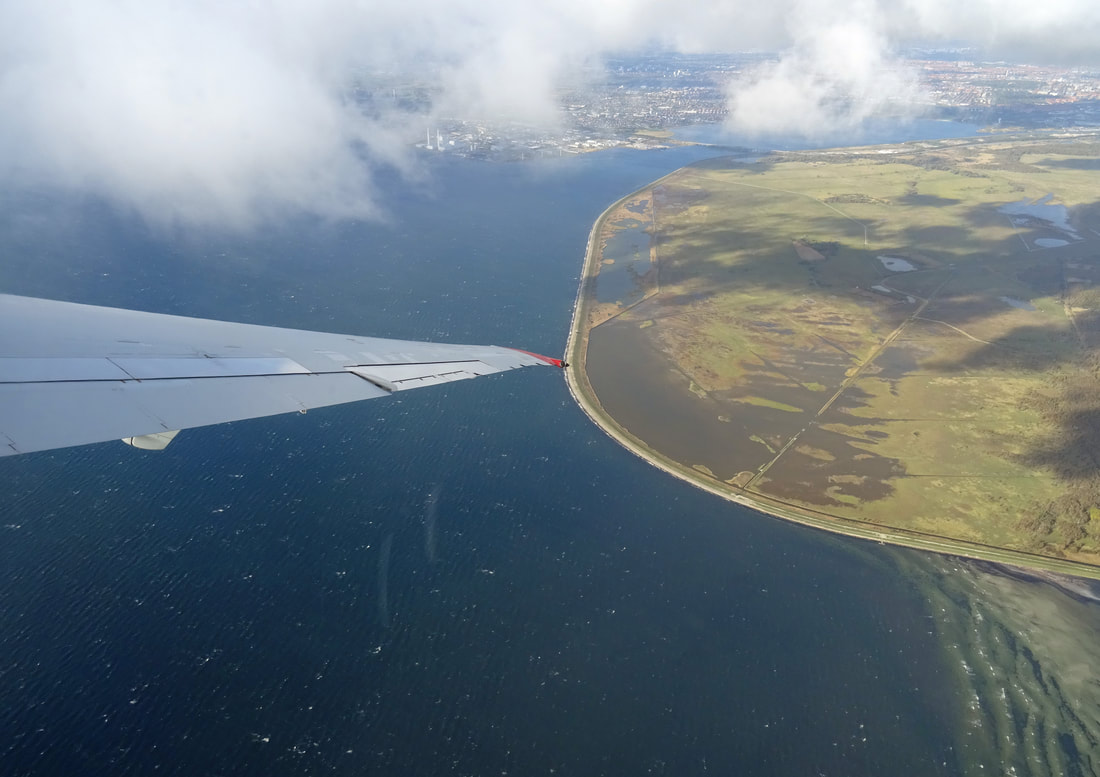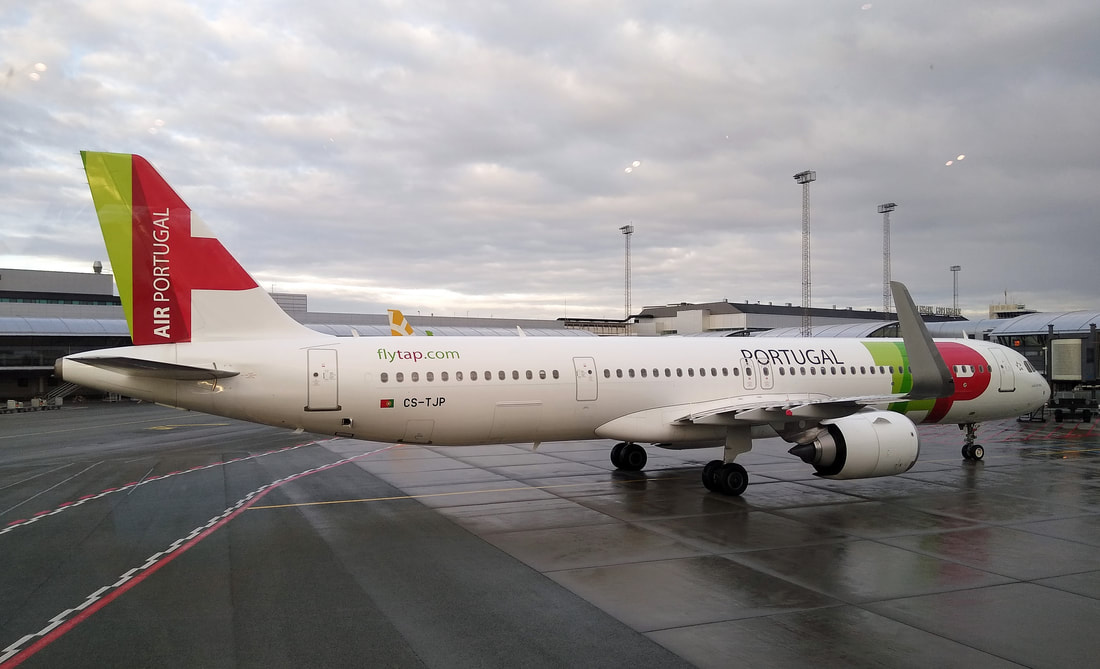MD-83 Farewell flight
By Jan Koppen / photo's by Xavier Poirot
Today, another McDonnell Douglas MD-80 was retired. Danish Air Transport (DAT) said goodbye to its last unit of the veteran narrow body type with a special flight to and from Copenhagen, Denmark.
DAT is a Denmark-based airline that operates both scheduled and chartered passenger and cargo flights. The carrier’s last remaining MD-83 has the capacity for 167 passengers seats in the cabin. Before the last call, the plane was flying to the likes of Palma De Mallorca, Spain and Pisa, Italy in recent weeks.
The airline offered the chance for the public to hop on board this final trip in Denmark. For 1,990 DKK ($310), passengers would receive a ticket to fly, drinks, snacks, a special t-shirt, and an MD safety “The DAT MD-83 have the serial number MSN 49936 and was finalised on the production line in 1989. The first flight was in 1990. Everything from the routing to what will happen onboard will be special – so you do not want to miss out.”
Flight DX1 took of from CPH at 14:12 to land back at 15:35. The total flight duration was one hour and 23 minutes.
on board card.
Super 80 OY-RUE joined DAT on January 24th, 2010. Before that, the aircraft held registration YR-HBZ with Jetran Air Spanair, AOM French Airlines, and Sunway Airlines were other holders of the plane. It was MyTravel Airways that introduced the unit, receiving it back in November 1990.
DAT is a Denmark-based airline that operates both scheduled and chartered passenger and cargo flights. The carrier’s last remaining MD-83 has the capacity for 167 passengers seats in the cabin. Before the last call, the plane was flying to the likes of Palma De Mallorca, Spain and Pisa, Italy in recent weeks.
The airline offered the chance for the public to hop on board this final trip in Denmark. For 1,990 DKK ($310), passengers would receive a ticket to fly, drinks, snacks, a special t-shirt, and an MD safety “The DAT MD-83 have the serial number MSN 49936 and was finalised on the production line in 1989. The first flight was in 1990. Everything from the routing to what will happen onboard will be special – so you do not want to miss out.”
Flight DX1 took of from CPH at 14:12 to land back at 15:35. The total flight duration was one hour and 23 minutes.
on board card.
Super 80 OY-RUE joined DAT on January 24th, 2010. Before that, the aircraft held registration YR-HBZ with Jetran Air Spanair, AOM French Airlines, and Sunway Airlines were other holders of the plane. It was MyTravel Airways that introduced the unit, receiving it back in November 1990.
Departing for an early morning run for Copenhagen Airport.
Air Greenland Airbus 330-200 is seen here parked at SAS Technical Services Copenhagen.
Brand new SAS Airbus 321 SE-DMR is seen here with her engines hermetically sealed to prevent dust and moisture penetrating the engines, thus preserving the aircraft in as good a condition as possible, during this ever lasting Covid-19 period.
Sole Air Greenland Airbus 330-200, OY-GRN, is almost daily operating between Copenhagen and Kangerlussauaq on Greenland.
Scandinavian Air Systems flight 909, nonstop service to New York's John F. Kennedy International Airport is almost ready for passenger boarding.
Airbus 320 OY-RCJ is seen here at Copenhagen Kastrup shortly after arriving on a scheduled flight from Vagar on the Faroe Islands.
Captain Jesper Rungholm, who is also the company's founder and CEO, was in charge of flight DX001.
The development of MD-80 series began in the 1970s as a lengthened, growth version of the DC-9-50, with a higher maximum take-off weight (MTOW) and a higher fuel capacity.
The MD-83 (DC-9-83) is a longer-range version of the basic MD-81/82 with higher weights, more powerful engines, and increased fuel capacity.
Compared to earlier models, the MD-83 is equipped with slightly more powerful 21,000 lbf (93 kN)-thrust Pratt and Whitney JT8D-219’s as standard.
Compared to earlier models, the MD-83 is equipped with slightly more powerful 21,000 lbf (93 kN)-thrust Pratt and Whitney JT8D-219’s as standard.
To cope with the higher operating weights, the MD-83 incorporates strengthened landing gear including new wheels, tires, and brakes, changes to the wing skins, front spar web and elevator spar cap, and strengthened floor beams and panels to carry the auxiliary fuel tanks.
The MD-83 features increased fuel capacity as standard (to 6,970 US gal (26,400 L)), which is carried in two 565 US gal (2,140 L) auxiliary tanks located fore and aft of the center section. The aircraft also has higher operating weights, with MTOW increased to 160,000 lb (73,000 kg) and MLW to 139,500 lb (63,300 kg). Typical range for the MD-83 with 155 passengers is around 2,504 nautical miles (4,637 km).
The nose strakes were introduced on the DC-9-50 to improve the directional stability and aerodynamic airflow at high angles of attack and certain flap positions. On the MD-80 series the strakes are anti-iced by bleed air via the airfoil anti-ice switches.
Photo credit: Carlos Alberto Vandre.
Photo credit: Carlos Alberto Vandre.
The basic "long-body" MD-80 versions (MD-81, MD-82, MD-83, and MD-88) have an overall length of 147 ft 10 in (45.06 m), and a fuselage length of 136 feet 5 inches (41.58 m) that is 4.62 m longer than the DC-9-50 and 13.5 m longer than the initial DC-9, the Series 10. Wingspan was also increased by 4.4 m in comparison with earlier DC-9s at 107 feet 10.2 inches (32.873 m). The aircraft's passenger cabin, from cockpit door to aft bulkhead, is 101 feet 0 inches (30.78 m) long and, as with all versions of the DC-9, has a maximum cabin width (trim-to-trim) of 123.7 inches (3.14 m).
Your photographer, Mr. Xavier Poirot.
The MD-80 is a mid-size, medium-range airliner. The series featured a fuselage 14 ft 3 in (4.34 m) longer than the DC-9-50. The DC-9's wing design was enlarged by adding sections at the wing root and tip for a 28% larger wing.
Photo credit: Carlos Alberto Vandre.
Photo credit: Carlos Alberto Vandre.
All versions of the MD-80 are equipped with a tricycle undercarriage, featuring a twin nose unit with spray deflector and twin main units with rock deflectors.
The JT-D8-219's mounted on the MD-80s are deafeningly loud.
From mid-1987, new MD-87-style low-drag "beaver" tail cones were introduced on all series of MD-80s, reducing drag and improving fuel burn.
All versions of the MD-80 are equipped with an AlliedSignal (Garrett) GTCP85-98D APU as standard. They're located in the lower tail compartment,ahead of the ventral stairway. When being started,a scoop air inlet will extend down and when the APU reaches operating speed, the scoop will retract and two doors, flush with the fuselage undersurface, will open inwards and stay open as long as the APU is running.
- The air intake in the fin leading edge is is for the air conditioning/air cycle machines.
- The drain from the ACM water separator socks. Drain water from the water separators is sprayed on the face of the secondary heat exchanger, to increase the cooling effectiveness, then vented overboard trough this aperture.
- The grilles on either side of the tailfin are cooling outlets for the aft tail compartment. It can be quite hot with the APU operating and also with air conditioning units and the pneumatic ducts in the area.
- The engine nacelle strakes were introduced on the MD-80 series for stall recovery. They add area which in turn adds drag and in a stall condition,this will help the nose drop faster than the tail.
|
The MD-80 has two rear fuselage-mounted turbofan engines, small, highly efficient wings, and a T-tail.
Two engines positioned on either side of the fuselage in front of the tail were so loud they made the plane easily recognized. While the pilots and first-class passengers enjoyed an unusually quiet ride up front, flight attendants complained about the noise of the two engines in coach.
Some pilots like planes, like the MD-80 being more analog, it gives them a greater feel of control! - They claim that the MD-80 gives them a sense of control as they input data manually instead of commanding on-board computers. But there are also pilots who find it the most un-ergonomic cockpit they had ever seen, with switches and dials seemingly placed at random spots all over the cockpit. For example; - The MD-80 lacked a central window post, so the compass was mounted behind the co-pilot’s seat to avoid interference from other equipment. Pilots could confirm display headings by looking into small flip-up mirrors atop the instrument panel and reading the compass setting. It’s a relatively goofy system, but it works!
The aircraft has five-abreast seating in the coach class. The aircraft series was designed for frequent, short-haul flights for 130 to 172 passengers depending on airplane version and seating arrangement.
Your author in seat 29F; - The MD-80 was really a product of his time!
A typical high-density layout is for 167 in one class (i.e., Airtours).
As the global fleet of MD-80's age and near the end of their useful lives, they rattled and creaked more than ever. The cabin environment systems, never great to begin with, struggled to keep the air fresh and at the right temperature.
As the global fleet of MD-80's aged and neared the end of their useful lives, mechanical issues mounted, making them increasingly unreliable and expensive to operate.
Like all Douglas-designed planes, the MD-80 was built like a flying tank: sturdy, strong and durable, but nothing special in terms of passenger experience. Yes, it had fewer middle seats than the 737 or Airbus’s comparable A320 (because it had only two seats on one side of the aisle and three seats on the other side). But it was longer, and therefore more difficult to board and de-board (especially for those seated in the back). There was nothing cutting edge about the passenger compartments.
The MD-80 became a common sight across the skies as it became something of a workhorse on short-haul routes. If you lived close to an airport served by the Mad Dog, you’d certainly be aware of it taking off as it roared into the sky.
I don’t mind the noise. OY-RUE is trying to power herself out of the Copenhagen runway 22R. No thrumming just high pitch whine.
The MD80’s always seemed louder than other planes’ engines because they are mounted on the side of the fuselage, next to the back few rows of windows whereas most other commercial jets have under-wing engines.
The workhorse known as the Super 80, whose old-school design and noisy rear engines spawned had a love-hate relationships with passengers and crew, over the four decades it flew.
The nickname 'Mad Dog' came not only from its MD initials, but also because it took-off like a rocket and made a hell of a lot of noise. Unlike later automated planes, the Mad Dog also needed full hands-on attention from the pilot during take-off and landing.
Due to the use of the aging JT8D engines, the MD-80 is not fuel efficient compared to the A320 or newer 737 models; it burns 1,050 US gal (4,000 l) of jet fuel per hour on a typical flight, while the larger Boeing 737-800 burns 850 US gal (3,200 l) per hour (19% reduction). In the 2000’s many airlines began to retire the type. Alaska Airlines' tipping point in using the 737-800 was the $4 per gallon price of jet fuel the airline was paying by the summer of 2008; the airline stated that a typical Los Angeles-Seattle flight would cost $2,000 less, using a Boeing 737-800, than the same flight using an MD-80. For a few other operator the JT8D's comparatively lower maintenance costs, due to simpler design, help narrow the fuel cost gap.
The MD-80 engines originally were touted as being quiet enough to meet the first set of tougher noise standards issued in the late 1970's.
The MD-80 production ended in 1999 after 1,191 were built.
For its time though, the MD-80 was a good performer. Also, the JT-8D were one of the best and most iconic engines.
The MD-80 is equipped with a two-crew flightdeck similar to that on the DC-9 from which it evolved.
Photo credit: Carlos Alberto Vandre.
Photo credit: Carlos Alberto Vandre.
Unfortuately, time to say goodbye!
TAP Portugal Airbus 32, CS-TJP, taxies to its gate at Copenhagen-Kastrup.
Back home on flight KL1132.

